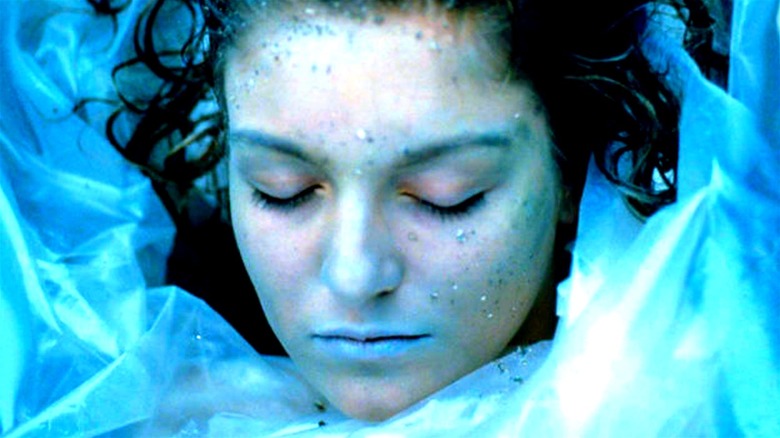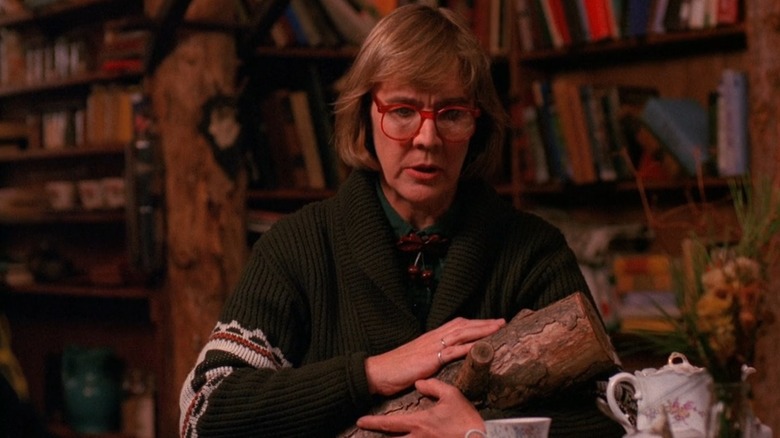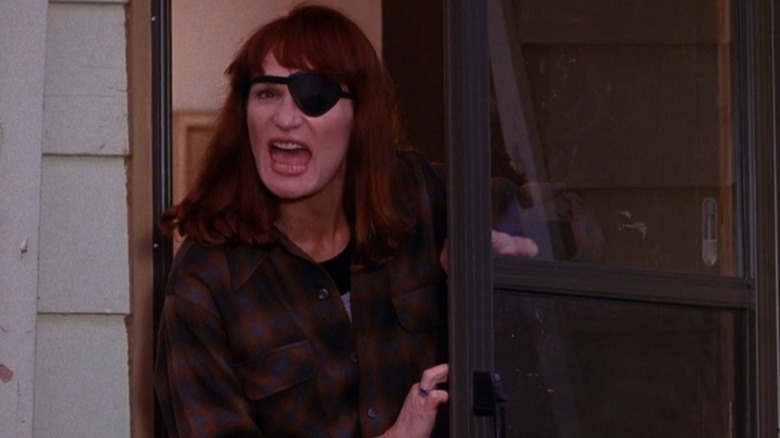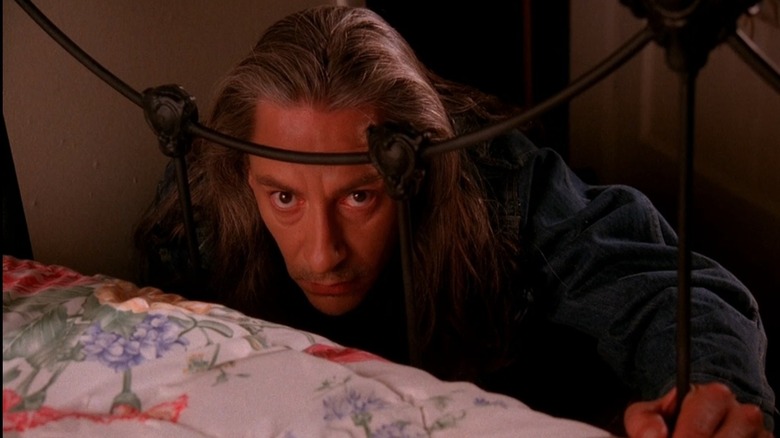Things You Only Notice In Twin Peaks After Watching It More Than Once
It has been over 30 years since "Twin Peaks" made its startling debut on ABC and even after a prequel film, several tie-in books, and a long-gestating third season in 2017, the show remains as elusive as ever. The series was a groundbreaking approach to TV that combined the thrills of a soapy murder mystery with co-creator David Lynch's signature surrealist dream-like vision. It's not only a show that every TV buff should watch at least once, but it also rewards those who go back for repeat viewings.
Between the lives of the citizens of Twin Peaks and the supernatural horrors they find themselves tied up in following the murder of teenager Laura Palmer (Sheryl Lee), there's a lot at work in the series. Even when things seem straightforward, nothing actually is. The sheer scope of the show alone makes it worthy of a rewatch, as there's simply no way to contend with everything after just one viewing. But there are also some more specific reasons to dive back in. From acquiring a deeper appreciation for the series' beguiling structure to picking up on fun details about the characters, those who opt to go back to the legendary pilot episode and press play will be rewarded.
Here are just a few things you'll only notice when you watch "Twin Peaks" for a second time.
Not everything squares up
While there are many elements to the narrative of "Twin Peaks," the murder of Laura Palmer and all the mysteries that surround it are certainly pretty significant. However, the series eschews the tight plotting of other TV shows for something much more esoteric. With a show like "Arrested Development," you want to rewatch to see all the running gags and intricately planned out bits of foreshadowing. But with "Twin Peaks," a rewatch only sinks you deeper into its bog of enigmas.
The series is full of storylines that disappear into murky nothingness, revelations that are never fully explained, and characters whose motivations remain opaque no matter how many times you try to put all the pieces together. What was the significance of that strange Argentinian box from "Twin Peaks: The Return"? Why does Josie Packard (Joan Chen) get turned into a drawer handle? Who, or what, actually is Margaret Lanterman aka The Log Lady (the late Catherine E. Coulson)?
A second viewing not only hammers home how many of these dangling threads there are, but it also allows the viewer to let go of the notion that you'll get an answer to everything and focus on the evocative imagery and emotions at play.
Some of the show's main characters barely interact with one another
A huge component of the appeal of "Twin Peaks" is its setting in a sleepy Pacific Northwest town. It's the type of place where everybody knows somebody who knows somebody else, which is part of what makes the initial news of Laura Palmer's death so intense, as many of the residents had some kind of relationship with her. However, upon a second viewing, you'll likely realize that despite the interconnectedness of the world, some of the show's central characters barely interact with each other at all.
The most notable example of this is Nadine Hurley (Wendy Robie), the intense eyepatch clad wife of lovable Big Ed (Everett McGill). Nadine's quest to invent a silent curtain runner and her bizarre super-strength after waking up from a coma represents some significant storylines for the series. However, despite her prominent place on the show, she never interacts with arguably the protagonist of the whole series, Agent Dale Cooper (Kyle MacLachlan).
Similarly, Josie Packard and her complex storylines barely see her cross paths with Donna Hayward (Lara Flynn Boyle), who in turn rarely interacted with Sheriff Harry Truman (Michael Ontkean) after the initial investigation into Laura Palmer's murder.
How the series delivers effective scares
One of the greatest tricks "Twin Peaks" manages to pull is the balancing act of offering viewers both a whimsical nighttime soap opera about a small town and a genuinely terrifying nightmare. The moments of horror are spaced out but when they do happen, they pack a wallop. Like so much else in the world of "Twin Peaks," it can be hard to pinpoint exactly why the scary moments are so electrifying. But when you watch the show for a second time after already experiencing them, it becomes easier to tell the techniques behind the terror.
Expectation is one of the most effective tools that is used to achieve these startling and unsettling moments. The show loves to stage scary scenes in otherwise "normal" environments, which has the dual effect of catching the viewer off guard and putting them on edge going forward.
A good example of this comes in the second episode. Laura Palmer's house certainly has an air of grief about it, but there's nothing to suggest that the brightly lit middle-class home will be the location of one of the scariest scenes in the whole series. Then, out of the blue, Sarah Palmer (Grace Zabriskie) has a vision of the demonic being known as BOB (Frank Silva) hiding at the foot of her daughter's bed.
On paper, nothing about the moment is particularly scary, as it's little more than a cutaway to a creepy-looking man crouched next to a bed frame in broad daylight. But the unexpected incursion of the unsettling image is brutally effective at eliciting chills. You might not be as scared by it the second time around, but you'll appreciate how well it's pulled off.



